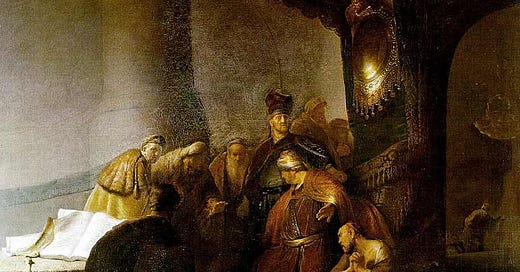Oratio
O Lord, We beseech you to keep your Church and household continually in the true religion, that they who do lean only upon the hope of thy heavenly grace, may evermore be defended by your mighty power, through Jesus Christ our Lord. Amen.1
Visio Divina
Visio Divina (Latin for Sacred Seeing) is a way of entering our prayer closet through sensible perception. Contemplating beauty in art, especially that which reflects on the events of our redemptive history, is a way of orienting our own lives within the context of our sacred inheritance. And just as the final observed artifact is beheld through the visual synthesis of the piece’s structure and form, its light and medium, its style and degree of motion, and ultimately its content, so prayer through the contemplation of sacred art tends to offer a visual synthesis of all dimensions of our faith.
Nota bene: Although many reformers were iconoclasts and viewed all images in the church as idolatrous, not all were. Nevertheless, it is possible the bulk of the reformers’ reactions to art in the Church was fitting with their reactions to the Church’s drift at their particular time in history, an essential characteristic of historical hermeneutics often overlooked or ignored by those who tend to hold their specific traditions in too high regard or denominational bonds too tightly. In other words, it was perhaps necessary at the time, if not an unfortunate over-reaction. Christian humanists, like Erasmus, tended toward an equitable view of art in the Church believing ornamental excesses could be distracting but art was essentially beneficial in the Church’s work of education and spiritual formation.
Crumbs from our Master’s Table
Short Expositions on Romans 1:9-18
The Book of Common Prayer from the Original Manuscript: Attached to the Act of Uniformity of 1662 (London; Edinburgh; Glasgow; Melbourne; Sydney; New York: Eyre & Spottiswoode, 1892), 107.







I agree that the iconoclast preference from the Reformers was definitely an over correction.